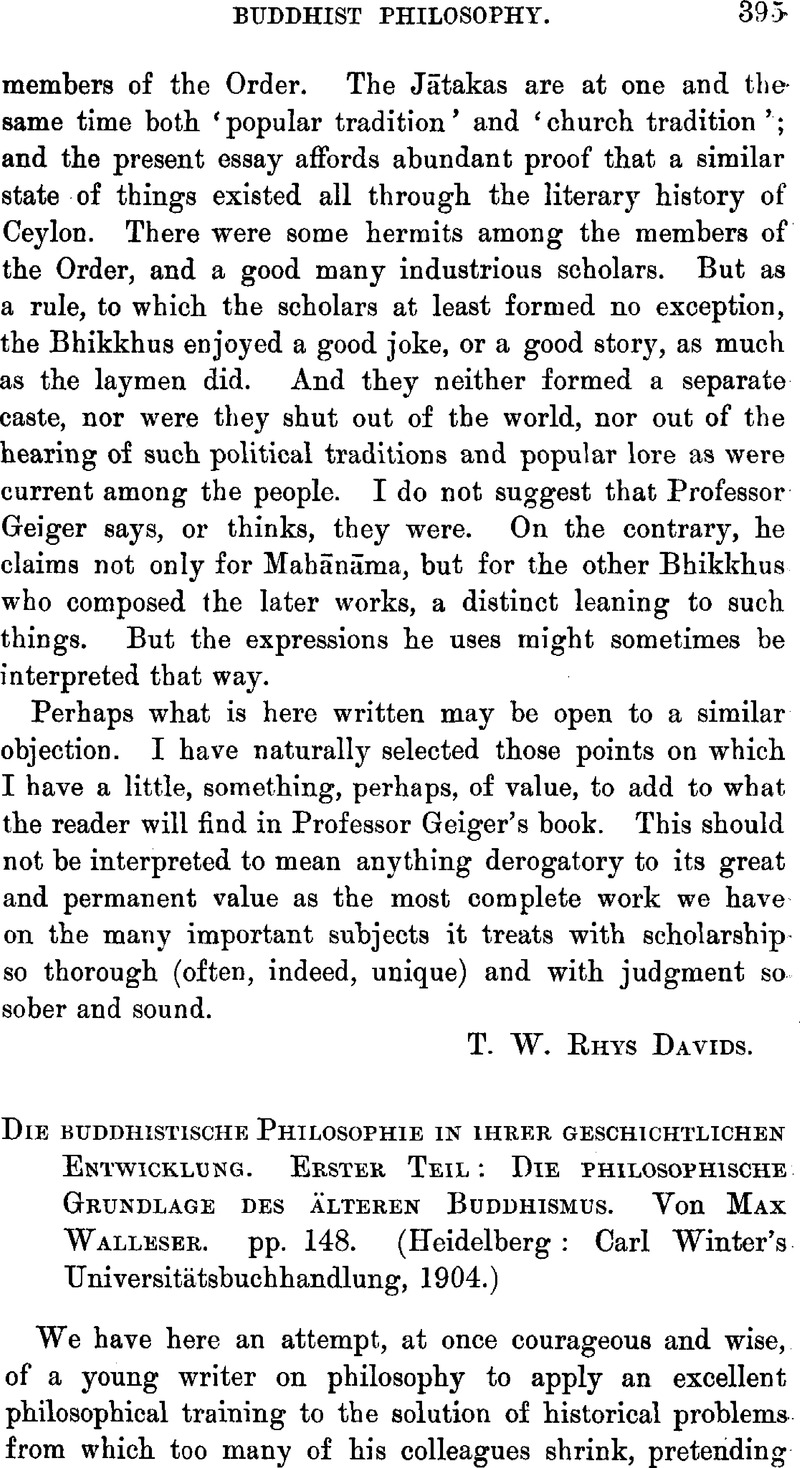No CrossRef data available.
Published online by Cambridge University Press: 15 March 2011

page 398 note 1 A., vol. ii, p. 24; Itv., p. 122.
page 398 note 2 Sandiṭṭhiko.
page 398 note 3 Cf. my review of the Majjhima Nikāya, P.T.S. edition, in this Journal, April, 1902.
page 399 note 1 “ Ubhinnaṁ atthaṁ carati, attano ca parassa ca” (Saṁyutta N. i, 162 and elsewhere).
page 400 note 1 Zur Erinnerung an Immanuel Kant, No. v ; Halle, 1904.
page 400 note 2 Buddhaghosa ap. Mahā Nid. S.—“black as with exudations of rotten leaves.”
page 400 note 3 E.g. nirvahitā (ch. viii, 14), rendered by anseinander dehnen in Deussen.
page 401 note 1 Majjh. N. i, 53.
page 401 note 2 Dh. S., § 1309; Vibh. 136 ; cf. Bdhgh. Sammoha-vinodanī ap. loc. cit. He explains the discrepancy by pointing out that in the former case the saṅkhārak-khandha is resolved into celanā, phasso, manasikāro. The four incorporeal skandhas, by the way, are often termed, e.g. in the Paṭṭhāna and in Buddhaghosa, arūpino, but never rūpino, i.e. having rūpa, which would be a contradiction in terms. The author, I venture to suggest, should have read catvāro 'rūpinaḥ skandhāḥ.
page 401 note 3 The ape as representing viññāṇa refers to the makkaṭa simile (Saṁy. N. ii, 95). The boat and raft similes in this and the Majjh. Nikāya do not help him out.
page 402 note 1 See Professor Takakusu's note in this Journal, January, 1905.